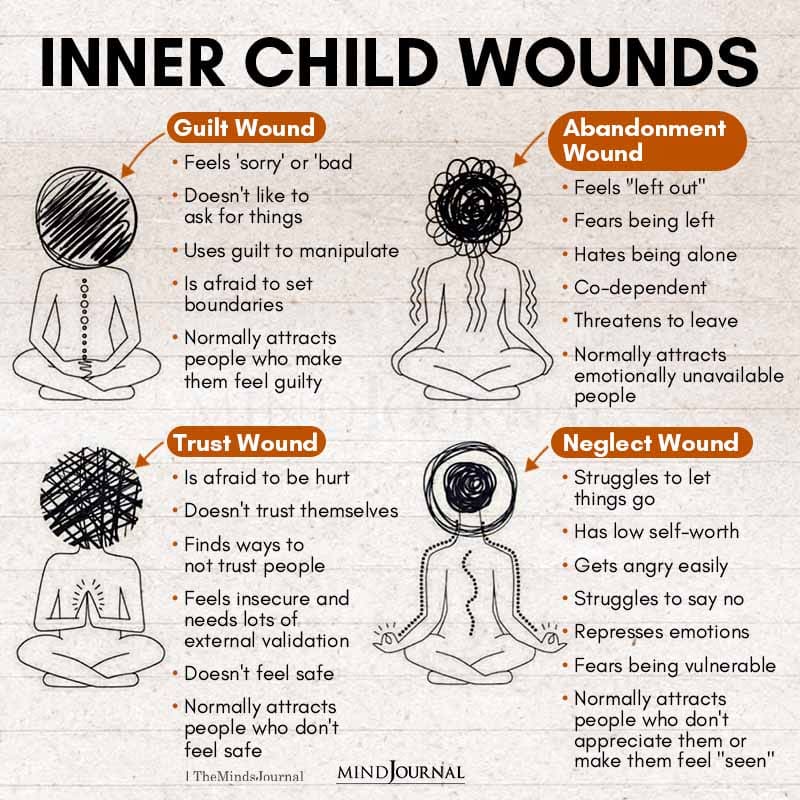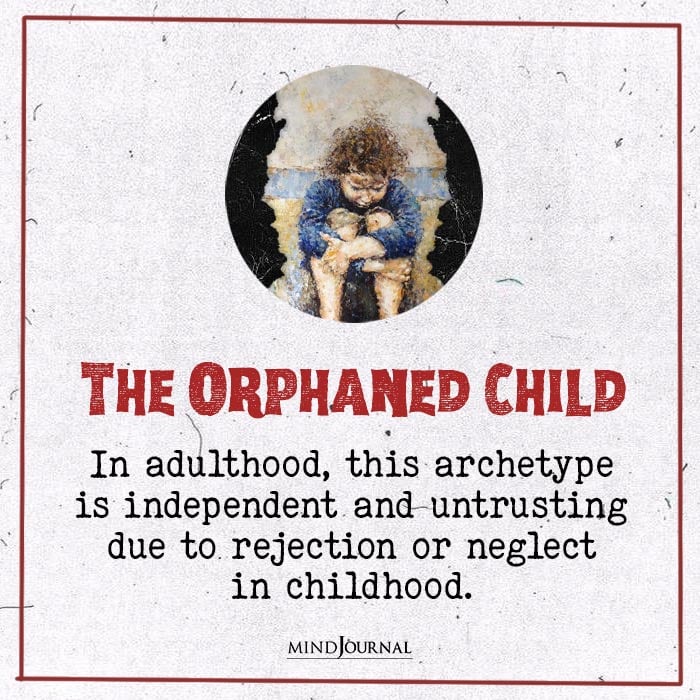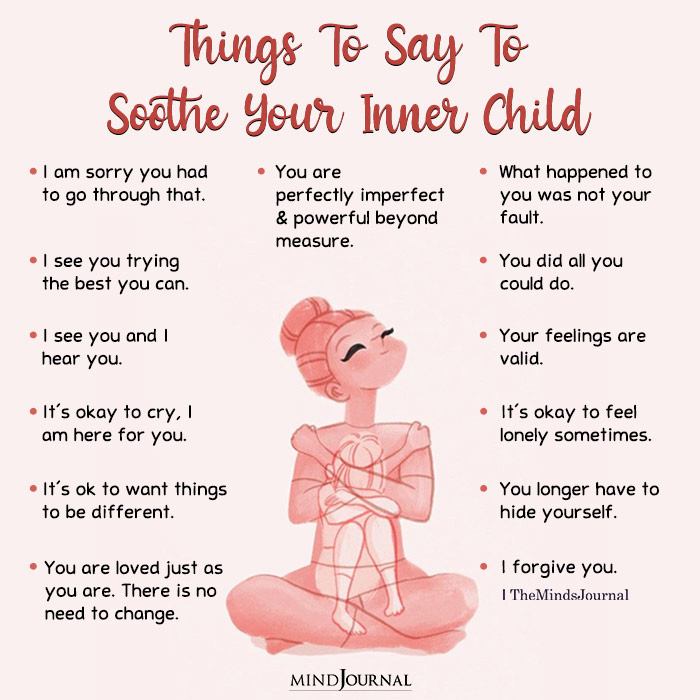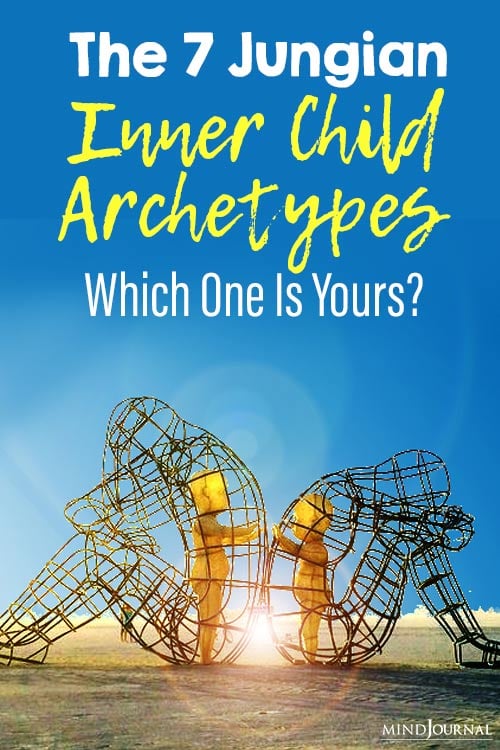Do you struggle to love yourself? Do you have high expectations from yourself? Are you constantly judging and criticizing yourself? Then it is likely that your inner child is wounded with residual trauma. You must have heard it by now: “get in touch with our inner child to understand yourself better.”
What you may not know is the importance of understanding the inner child archetypes as it lies at the root of everything.
Adverse and traumatic experiences in childhood shape how we see the world and ourselves as adults. It influences our conscious and subconscious thoughts and our limiting beliefs. However, understanding our inner child is crucial for self-healing, developing healthy interpersonal relationships, building your self-esteem and practicing self-love.
Related: Self Love and Inner Child
Once we better understand our inner child archetypes and and do some much-needed inner child work, we can alter distorted perceptions and negative thought patterns as adults. We can be our most authentic selves and understand who we truly want to be only by being at peace with our inner child.

What are inner child archetypes?
The child archetype is considered a depiction of a child’s psychological maturation and the development of potentialities in their adulthood. It significantly influences the development of the child’s psyche. Swiss psychologist Carl Jung originally developed the concept of child archetypes as he believed that archetypes are common, inherent models observed in people. Jung believed these archetypes can help us understand the behaviors and personalities of different people as these refer to different yet familiar experiences, motivations, fears and characteristics.
The inner child archetypes were later modified by author Caroline Myss who believed that regardless of our age, all of us seek innocence.
Related: Deep Secrets and Inner Child Healing: How To Connect With Your Inner Child
What are the 7 inner child archetypes?
If you are looking to do some inner child work, understand yourself better and experience unconditional self-love, then learning about the inner child archetypes becomes the essential first step. Here is a quick look at the different archetypes observed in a child –
1. The Wounded Child

This archetype contains certain wounds or negative emotional patterns that were experienced by someone in their childhood, typically before the age of 7. These wounds may involve trauma, neglect or abuse and have led to long term emotional damage, which is experienced by the person even in their adulthood. However, their emotional pain can make them deeply compassionate. Author, Jungian and certified Creative Depth Coach Jan Blencowe explains that this archetype, in their childhood and adulthood, “can often have a deep sense of compassion, understanding and sense the wounds of others because she was wounded herself.”

The dark side:
As an adult, the wounded child may experience frequent anger outbursts as they act out of their emotional pain and believe that their anger is justified. It exists in the ‘Shadow’ aspect and is often misunderstood. They tend to shift blame, engage in self-pity and desperately seek parental or authority figures as adults.
Related: Wounded Healer: Signs You’re Broken But Choose To Help Others
2. The Orphaned Child

One of the seven inner child archetypes, the orphan is shaped by a history of rejection, neglect, abuse, abandonment and a lack of a sense of belonging. Even in a family setting, they are seen as an outsider. Hence, they are compelled to mature faster and learn how to protect themselves. Also known as the realist, this archetype typically has a pessimistic outlook to feel safe and avoid emotional pain. As they don’t feel a strong connection to their family, they are often motivated to build their own family and usually develop familial bonds with others, such as friends, usually unintentionally or unconsciously, to feel a sense of belonging.
The orphaned child is typically the dark horse of the family and is often different from the other family members. While most of their family may be extroverts, the orphan may be inherently an introvert. “Because the Orphaned Child is not part of the family or tribal circle, family influence is far less than normal,” says Jan Blencowe.
The dark side:
The life of the orphan child is not influenced by family expectations, attitudes or beliefs and they typically live independently, creating their own reality. However, they secretly want to belong to a family or tribe, but their fear and lack of trust makes them push people away, whether unconsciously or consciously.
Related: Reparenting: 3 Ways To Heal your Inner child
3. The Magical Child

Another one of the 7 inner child archetypes, the magical child is believed to be exceptionally talented, skilled and creative. They are knowledgeable and brave problem solvers who think out of the box to create the life they want. Also known as the wonder child, it is often found as a sub-archetype in most of us. It represents the eternal human experience which others often find enchanting. This archetype often believes in fairy tales and angels and is able to see the inner beauty our world has to offer, even in places and times, when it is hard to see it.
The dark side:
This is one of the inner child archetypes that frequently engages in daydreaming and being lost in their imagination as they are more connected to a world of fantasy than the world of reality. However, in the shadow, they may suffer from depression when they are compelled to face reality and detach from their fantastical worlds, especially in their adulthood.
Related: How Inner Child Healing Can Help You Have Healthy Adult Relationships

4. The Nature Child

This child archetype lives in harmony with nature and its forces, whether internal or external. They know how to tap into the unimaginable power of nature and align their lives with the natural cycles. This is one of the primal inner child archetypes that is present in all of us that enables us to survive from life to death. They are carers and protectors of the natural world and seek innocence in nature. This archetype is typically wise and yet naïve and sensitive. Author Jan Blencowe explains that they have the innate ability to connect and befriend animals & trees, have a tendency to collect natural items like stones & sticks. They can intuitively sense changes in weather or the soul of the earth and are also prone to grow crops, trees, animals etc.
The dark side:
The shadow aspect may lead them to experience betrayal due to their naive innocence. When this archetype is unable to connect with nature, especially while living in an urban setting, they may experience isolation and frustration. This can lead to behaviors that are completely opposite to their inner nature, like abusing animals, neglecting nature or polluting the environment.
Related: Cutting Cords: How You Can Cut Cords And Heal Your Inner Child
5. The Eternal Child

This archetype represents the eternal youth present in every single human being. They bask in the spirit of youth and thrive with spiritual energy and “childlike wonder” even in their adulthood. They are unconsciously connected to metaphysical spiritual powers and love to enjoy the little things in life. Another one of the seven inner child archetypes, the eternal child is innocent, independent and has a devil-may-care attitude. They have an unstructured way of living and enjoy playtime as adults.
The dark side:
In the shadow aspect, the eternal child may refuse to grow up or to face the realities of adult life. They may be very dependent and resist taking responsibilities, whether for themselves or their family, refuse to follow social norms and prefer to live a life that doesn’t necessarily follow the structure of the outside world. “No longer a child, they drift unable to grow up and function well in the adult world they reject and avoid,” states Jan Blencowe.
Related: 15 Powerful Childlike Qualities to Regain
6. The Needy Child

Also known as the dependent child, this one of the inner child archetypes that is never satisfied with what they have. They feel that something is missing in their life, have a heavy heart and are constantly looking for something they lost or never received in their childhood. However, they are never sure what that may be. They may have experienced neglect or abandonment as a child. The needy child struggles to experience satisfaction in life as nothing fills the void inside them.

The dark side:
The shadow aspect may involve feelings of unworthiness, depression and low self-esteem. They tend to be rather selfish and self-oriented, completely absorbed by meeting their own needs, and avoiding the needs of their loved ones. They usually have self-absorbed and needy attitudes in relationships, which are typically unhealthy and abusive.
Related: Shadow Self: 3 Ways To Embrace Your Inner Darkness
7. The Divine Child

This is perhaps one of the most unique inner child archetypes explained by author Caroline Myss. This archetype is marked by qualities like purity, innocence, loving-kindness, redemption and god-like traits that allow the divine child to have a unique connection with The Universe or The Supreme Being. However, they are simultaneously both powerful and helpless. Certified Creative Depth Coach Jan Blencowe says “Their innocent, compassionate, gentle nature and essence seems to resonate on a higher energetic vibration than most other humans.” As they experience an innate enlightenment, others seeking healing are often attracted to them.
According to Jung, the divine child is primarily a manifestation of the Self and focuses on internal restructuring of our existing psyche, whether individually or culturally. They may possess “special powers” due to their special relationship with the Divine. Hence, they are known to be helpful healers.
The dark side:
According to Caroline Myss, while we may believe that since this archetype is associated with the Creator, it does not possess a shadow aspect, in reality the divine child is incapable of protecting itself against negative energies. They may also possess certain negative qualities like anger, arrogance, deception and injustice. “This archetype’s shadow may take the form of the Guru, who deceives or dominates his or her followers, wielding spiritual power in dangerous and inappropriate ways,” adds Jan Blencowe.
Related: How to Heal Your Inner Child That Is Blocking You For Love

Which inner child archetype are you?
Can you relate to any of these inner child archetypes developed by Carl Jung and Caroline Myss? Do you see yourself in only one of these archetypes or in multiple ones? There is no doubt that our childhood experiences shape our adult personalities. As all of us have different and unique childhood experiences, both positive and negative, we may develop qualities of more than one child archetype as an adult.
Now that you have a better understanding of the inner child archetypes, you will be better able to explore your inner self, understand your psyche, heal yourself and build better relationships with your parents, romantic partner and loved ones.
Related: Why Healing your Inner Child is Crucial for Self-Growth
Frequently Asked Questions (FAQs):
What is the inner child theory?
Based on the concept of psychologist Carl Jung, our inner child refers to an aspect of our subconscious linked to our past memories, emotions, beliefs & experiences. It is associated with innocence, creativity and playfulness, along with dreams and hopes for the future.
How many types of inner child are there?
According to author Caroline Myss, there are 7 Inner Child Archetypes, namely The Wounded Child, The Orphaned Child, The Magical Child, The Nature Child, The Eternal Child, The Needy Child and The Divine Child.
What is one of the weaknesses of the child archetype?
All the Inner Child Archetypes involve the shadow aspect which comprises certain negative qualities or traits that are unacceptable to the individual and to the society at large. These may include selfishness, anger, hate, jealousy, greed, anxiety etc.











Leave a Reply